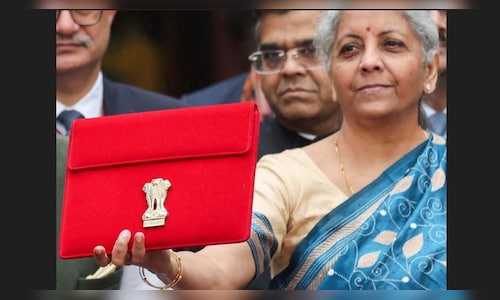While both revenue deficit and fiscal deficit are targeted to be lower than the revised estimate in 2024-25 it is still substantial at 1.5% of GDP and 4.4% of GDP respectively. This must be juxtaposed with the outstanding liabilities of the central government which is estimated to be 56.1% of the GDP. This is humongous and places a burden on the Central Government. The changes proposed in the income tax regime with new proposed tax slabs made news-the Finance Minister’s speech mentioned a likely revenue foregone of ₹1 lakh crore because of these proposals.
Which raises the basic question — are we doing enough to ensure we collect all what is due? Annexure-5 of the Receipt Budget 2025-26 would clearly suggest we are not. This is the statement of Tax Revenues raised but not realised furnished by the Central Government in terms of Rule 6 of the Fiscal Responsibility and Budget Management (FRBM) rules — this rule ensures transparency in its fiscal operations and seeks to minimise secrecy in the annual financial statement.
The total amounts under dispute on taxes on income and expenditure is ₹13,36,239.36 crore — corporation tax accounting for ₹8.06 lakh crore and taxes on income ₹5.29 lakh crore out of this amount. ₹2.50 lakh crore is said to be pending for more than 5 years. The position on taxes on commodities and services is marginally better. The total amount under dispute is ₹2,03,493.14 crore. Service tax accounts for the maximum with ₹1.02 lakh crore followed by Union Excise at ₹56 thousand crore and Customs at ₹39 thousand crore. More than ₹70 thousand crore out of the total is pending for more than 5 years.
If these figures make dismal reading it get worse when the amounts not under dispute are examined. What this indicates is that the process of adjudication and appeal has reached finality — these are amounts which undisputedly must accrue to the government but have not. The total arrears due on taxes on income and expenditure is ₹.15,22,642.32 crore. Out of this Corporation tax accounts for ₹5.90 lakh crore and taxes on income ₹9.32 lakh crore. More than ₹5 lakh crore is said to be pending for more than 5 years. The position on taxes on commodities and services is significantly better with the total amount of arrears at ₹45 thousand crore.
Annexure 6 of the Receipts Budget gives details of arrears on non-tax revenue — this as the name suggests is revenue earned by the government from sources other than through taxes. This is revenue from fiscal services, dividends and profits, police receipts and receipts from other economic services —petroleum cess /royalty. Even here there are substantial amount of arrears—a grand total of ₹3,65,741 crore.
The total amount of arrears of tax revenues is ₹31 lakh crore and of non-tax revenues is ₹3.65 lakh crore — a massive total of more than ₹34 lakh crore. The Receipt Budget of the earlier year, 2024-25 showed a total arrears of tax revenues at Rs.21.30 lakh crore. In effect there has been a significant jump of tax arrears by nearly ₹10 lakh crore in the one year since. What is more disturbing is that this has been the trend. The position of Tax Arrears raised but not realised as per the Receipt Budget 2023-24 was ₹15.82 lakh crore —and by the next fiscal the position has worsened by nearly 5 lakh crores.
This raises the larger question — what steps are being taken to reduce the arrears? The details given in the Receipt Budget do not indicate how much arrears have been reduced or realised in the year. As indicated above there has only been an increase in the total arrears. Obviously, this is an area which has not got the attention it deserves. It makes little sense for enforcement agencies to detect cases of evasion, for the lengthy process of adjudication and appeal to get over, demand getting confirmed and then have little action taken by the department to realise the arrears. This is revenue lost— and the total amount of arrears if realised will significantly reduce the fiscal burden of government.
It is necessary that both the Central Board of Direct Taxes and Indirect Taxes create special teams to focus on realising arrears. Given the large and long years of pendency, it is going to be difficult. Technology should be used and data bases created of such defaulter s so that they can be identified if they are operating under a different name. And where the defaulters are not traceable despite the best efforts than in terms of the extant rules write-off of such irrecoverable arrears should be resorted. Otherwise, this will be a blot which the departments can well be without.
— The author, Najib Shah, is former Chairman, Central Board of Indirect Taxes & Customs. The views expressed are personal.
Read his previous articles here
(Edited by : Unnikrishnan)


